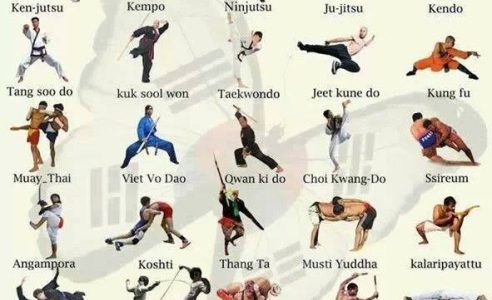The Development And Historic Context Of Martial Arts Worldwide
The Development And Historic Context Of Martial Arts Worldwide
Blog Article
Material Develop By-Kaufman TRUE
Martial arts have a fascinating background that extends centuries and continents. You might find it interesting exactly how ancient techniques like Shuai Jiao and Kalaripayattu laid the groundwork for contemporary combat methods. These disciplines not just emphasize physical abilities but also mirror the cultures that birthed them. As you discover their evolution, take into consideration how globalization has changed these traditional forms right into hybrid styles. What impacts do you assume have shaped today's martial arts landscape?
Ancient Martial arts: The Foundations of Fight
As you look into the globe of old martial arts, you'll find the rich foundations that shaped fight techniques across societies. Very early methods concentrated on Self-Defense and survival, commonly integrating strikes, grappling, and weaponry.
In ancient China, for instance, methods like Shuai Jiao emphasized tosses and joint locks, while India's Kalaripayattu showcased agility and fluid movement. Japanese samurai established Kenjutsu, a refined swordsmanship that highlighted technique and approach.
These martial arts offered not just for battle but additionally as a means of personal development, instilling worths like regard and perseverance. The blending of these strategies in time prepared for the diverse martial arts you see today, each mirroring the distinct ideologies and needs of its society.
The Cultural Influence on Martial Arts Growth
While martial arts commonly reflect the useful requirements of a society, they additionally personify the social worths and beliefs of their beginnings. When you check out different martial arts, you'll discover exactly how they're influenced by faith, ideology, and social standards.
As https://www.wjhg.com/video/2022/07/21/summertime-learning-last-dragon-martial-arts/ , the focus on regard and discipline in Japanese martial arts comes from Zen Buddhism and samurai society. In contrast, Brazilian Jiu-Jitsu advertises flexibility and strategy, formed by the requirement for effectiveness in a diverse, modern atmosphere.
You might discover that the rituals, attires, and training techniques reflect a neighborhood's history and identity. By understanding these social impacts, you grow your recognition of martial arts and their duty in shaping human experiences around the world.
Modern Adaptations and the Globalization of Martial arts
Martial arts have changed considerably in current decades, adjusting to modern society and worldwide impacts. You'll observe that typical kinds have combined with modern techniques, developing hybrid styles like MMA. These adjustments satisfy diverse target markets, making martial arts easily accessible and appealing worldwide.
With the surge of social networks and digital systems, you can find tutorials and competitions from all corners of the world, damaging geographical obstacles. Karate has brought about a common gratitude for numerous self-controls, from Brazilian Jiu-Jitsu to Taekwondo.
As you engage with these arts, you'll understand they're not nearly combat; they promote fitness, discipline, and mental health.
Eventually, modern-day adaptations have improved the martial arts landscape, making it a dynamic and developing practice.
Final thought
In checking out the background and development of martial arts, you uncover a remarkable mix of techniques, cultures, and viewpoints. From ancient self-controls like Shuai Jiao and Kalaripayattu to the modern flexibility seen in mixed martial arts, martial arts show mankind's quest for Self-Defense and individual growth. As you involve with these methods, you not only gain abilities however additionally a deeper appreciation for the varied customs that form our world today. So, continue your trip and accept the art of fight!
